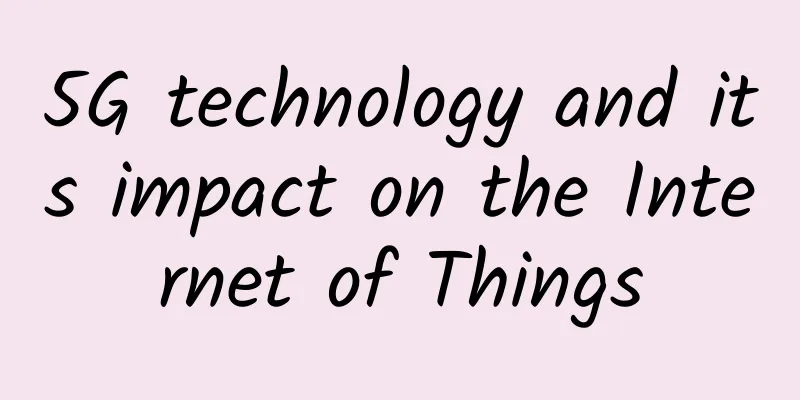An article to help you understand the concept of TCP/IP

1. What is TCP/IP?Transmission Control Protocol/Internet Protocol refers to a suite of protocols that enables information transmission between multiple different networks. TCP/IP is a general term for communication protocols. TCP/IP is a collection of protocols such as IP, TCP, UDP, HTTP, and SMTP. TCP has two major characteristics: openness and practicality First of all, openness is due to the fact that the TCP/IP protocol is discussed and developed by IETF, and IETF itself is an organization that allows anyone to join and discuss. Secondly, in the process of TCP/IP standardization, the specification of a protocol is no longer important, but the primary task is to implement the technology that can actually achieve communication. So some people joked that "TCP/IP is simply" developing the program first and then writing the specification. 2. What is a protocol?When we visit a web page to obtain information, we are unaware of the existence of the protocol. The protocol is only involved when we reconfigure the computer's network connection or modify network settings. Simply put, a protocol is a "protocol" that is reached in advance when computers communicate over a network. This "protocol" enables computers made up of different manufacturers' equipment, different CPUs, and different operating systems to communicate as long as they follow the same protocol. Otherwise, if different protocols are used, communication will not be possible. This is like two people speaking different languages and not being able to understand each other. There are many types of protocols, each of which clearly defines its behavior. Two computers must be able to support the same protocol and follow the same protocol to communicate with each other. In computer communication, it is particularly important to reach a detailed agreement in advance and follow this agreement. This agreement is actually a protocol. Note: Protocol address https://www.rfc-editor.org/rfc/ 3. Packet switching protocolPacket switching refers to the method of dividing large data into smaller units called packets for transmission. Computer communication will attach the source host address and the destination host address to each packet and send it to the communication line. The part where the sender address, the receiver address and the packet sequence number are written is called the "message header". The communication protocol usually stipulates what information should be written in the message header and how to process this information. 4. The relationship between the Internet and TCP/IPWhen the Internet communicates, the corresponding network protocol is required. TCP/IP is a protocol family originally developed for the use of the Internet. Because the Internet protocol is TCP/IP, TCP/IP is the Internet protocol. 5. Relationship between TCP/IP and OSIOSI concept: Open System Interconnect Open System Interconnection Reference Model is defined by ISO (International Organization for Standardization). It is a flexible, robust and interoperable model, not a protocol, and is often used to analyze and design network architecture. The OSI model is divided into seven layers: OSI divides the network into seven layers, from bottom to top: physical layer, data link layer, network layer, transport layer, session layer, presentation layer, and application layer. The TCP/IP model is divided into four layers: data link layer, network layer, transport layer, and application layer In the TCP/IP reference model, the session layer and presentation layer in the OSI reference model (the functions of these two layers are merged into the application layer), and the data link layer and physical layer are merged into the physical link layer. Application layer:Application-specific protocols Presentation layer:Conversion between device-specific data format and network standard data format Session layer:Communication management, responsible for establishing and disconnecting communication connections Transport layer:Manages data transfer between two nodes. TCP is a link-oriented transport layer protocol that ensures that communication between two hosts is reachable. TCP can correctly handle abnormal situations such as packet loss and disordered transmission order during transmission. In addition, TCP can effectively utilize bandwidth and alleviate network congestion. However, in order to establish and disconnect the connection, it sometimes needs to send and receive packets at least 7 times, resulting in a waste of network traffic. In addition, in order to improve the utilization of the network, the TCP protocol defines a variety of complex specifications, which is not conducive to use in video conferencing and other occasions. UDP is different from TCP. It is a connectionless transport layer protocol. UDP does not care whether the other end actually receives the transmitted data. If you need to check whether the other end has received the packet data or whether the other end is connected to the network, you need to implement it in the application. UDP is often used in multimedia fields such as small packet data or multicast, broadcast communication, and video communication. Network layer:Address management and routing Data Link LayerTransmit and identify data frames between interconnected devices Physical Layer0 and 1 represent the voltage level and the flashing of the light. |
<<: Dubbo 3.0? No! RSocket is the eternal god
Recommend
Talk: Application is slowed down? The culprit is Log4j!
[[338229]] Some time ago, we discovered that a Sa...
Connectivity trends: All roads lead to Wi-Fi in 2023 and beyond, says Wi-Fi Alliance
Despite turbulent times, Wi-Fi has had a stellar ...
NFV forwarding throughput reaches 120GB, Setes aims to create a new NFV landscape in China
On the morning of December 8, at the 2016 GNTC Gl...
The three major operators announced their operating data for May
Recently, the three major operators released thei...
Virtono: €11.21/year KVM-512MB/15G SSD/1TB/San Jose & Dallas & Romania, etc.
Virtono is a foreign VPS hosting company founded ...
Goodbye! Another important business of the three major operators has been "cut off"!
As the Internet gradually moves towards mobile te...
The latest report on the value of the French 5G market: 100% 5G network is expected to be achieved by 2030
According to foreign media reports, in December 2...
The second half of the 5G era begins
On June 6, 2019, China officially issued 5G licen...
Difference between web scraping and web crawling
People sometimes mistakenly use the terms “web sc...
CUBECLOUD New Year promotion cloud server 25% off, Los Angeles CN2 GIA/Hong Kong CN2 GIA route optional
CUBECLOUD has launched a limited-time promotion d...
Don’t rush to fight for 5G
Recently, discussions about 5G have been everywhe...
Whose encryption key is hardcoded in the code?
System design, protocol first. Most people do not...
IoT security and vulnerabilities that 5G will bring
Simply put, the Internet of Things is a network o...
iONcloud 10% off in April, San Jose/Los Angeles/Honolulu/Dallas data centers
iONcloud is a cloud hosting platform established ...
5G Network as a Service (NaaS): How 5G enables telecom operators to monetize their networks
5G provides a large number of new applications fo...








![[6.18] Alibaba Cloud: Hot-selling cloud server ECS with annual payment starting from 59.9 yuan](/upload/images/67cac332261ca.webp)
